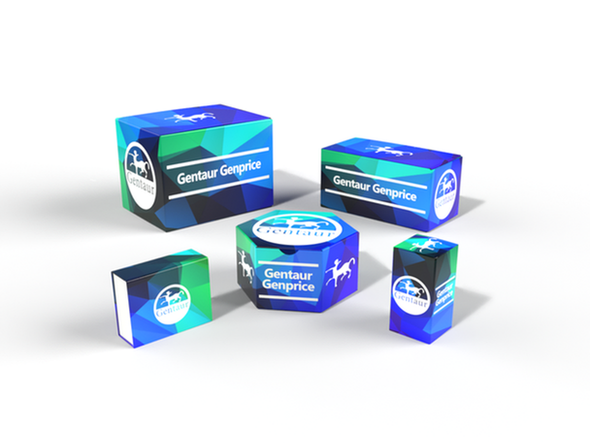749
Human Ephrin-A3 (EFNA3) ELISA Kit | KTE61948
- SKU:
- 749-KTE61948
- Availability:
- Usually ships in 5 working days
Description
Human Ephrin-A3 (EFNA3) ELISA Kit | KTE61948 | Gentaur UK, US & Europe Distribution
Application: This Human Ephrin-A3 (EFNA3) ELISA Kit employs a two-site sandwich ELISA to quantitate EFNA3 in samples. An antibody specific for EFNA3 has been pre-coated onto a microplate. Standards and samples are pipetted into the wells and anyEFNA3 present is bound by the immobilized antibody. After removing any unbound substances, a biotin-conjugated antibody specific for EFNA3 is added to the wells. After washing, Streptavidin conjugated Horseradish Peroxidase (HRP) is added to the wells. Following a wash to remove any unbound avidin-enzyme reagent, a substrate solution is added to the wells and color develops in proportion to the amount of EFNA3 bound in the initial step. The color development is stopped and the intensity of the color is measured.
Detection Method: Colorimetric
Conjugate: N/A
Sample Type: Cell culture supernatants#Serum#Plasma#Other biological fluids
Assay Type: Multiple steps standard sandwich ELISA assay with a working time of 3-5 hours. It depends on the experience of the operation person.
Kit Component: • Human Ephrin-A3 microplate
• Human Ephrin-A3 standard
• Human Ephrin-A3 detect antibody
• Streptavidin-HRP
• Standard diluent
• Assay buffer
• HRP substrate
• Stop solution
• Wash buffer
• Plate covers
Features & Benefits: Human Ephrin-A3 (EFNA3) ELISA Kit has high sensitivity and excellent specificity for detection of Human EFNA3. No significant cross-reactivity or interference between Human EFNA3 and analogues was observed.
Calibration Range: Please inquire
Limit Of Detection: Please inquire
Usage Note: • Do not mix components from different kit lots or use reagents beyond the kit expiration date.
• Allow all reagents to warm to room temperature for at least 30 minutes before opening.
• Pre-rinse the pipet tip with reagent, use fresh pipet tips for each sample, standard and reagent to avoid contamination.
• Unused wells must be kept desiccated at 4 °C in the sealed bag provided.
• Mix Thoroughly is very important for the result. It is recommended using low frequency oscillator or slight hand shaking every 10 minutes.
• It is recommended that all samples and standards be assayed in duplicate or triplicate.
Storage Instruction: The unopened kit should be stored at 2 - 8°C. After opening, please store refer to protocols.
Shipping: Gel pack with blue ice.
Precaution The product listed herein is for research use only and is not intended for use in human or clinical diagnosis. Suggested applications of our products are not recommendations to use our products in violation of any patent or as a license. We cannot be responsible for patent infringements or other violations that may occur with the use of this product.
Background: Ephrin-A3 is a member of the ephrin (EPH) family. The ephrins and EPH-related receptors comprise the largest subfamily of receptor protein-tyrosine kinases and have been implicated in mediating developmental events, especially in the nervous system and in erythropoiesis. Based on their structures and sequence relationships, ephrins are divided into the ephrin-A (EFNA) class, which are anchored to the membrane by a glycosylphosphatidylinositol linkage, and the ephrin-B (EFNB) class, which are transmembrane proteins. This gene encodes an EFNA class ephrin. Expressed in brain, skeletal muscle, spleen, thymus, prostate, testis, ovary, small intestine, and peripheral blood leukocytes.
Alternative Names: EFNA3; EFL2; EPLG3; Ehk1-L; LERK3; eph-related receptor tyrosine kinase ligand 3; ephrin A3; ligand of eph-related kinase 3
Search name: EFNA3; EFL2; EPLG3; Ehk1-L; LERK3; eph-related receptor tyrosine kinase ligand 3; ephrin A3; ligand of eph-related kinase 3
Tag: EFNA3






